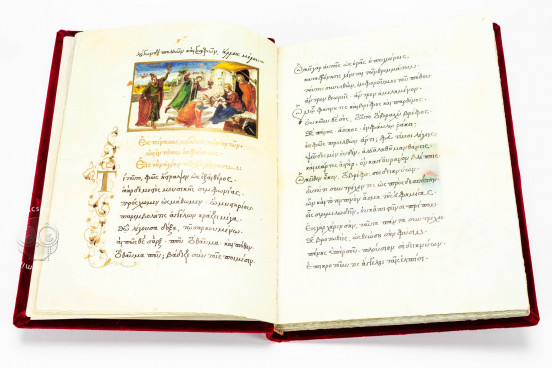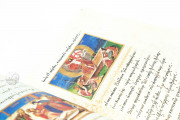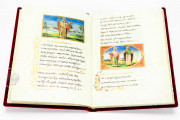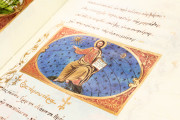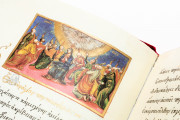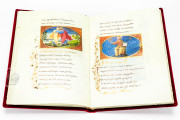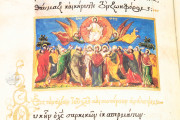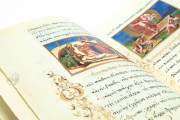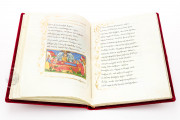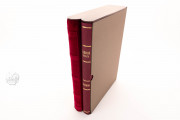The Escorial manuscript of the Byzantine Epigrams and Icons of John Mauropus of Euchaita was created in 1564 at the behest of one Nicholas the Greek for presentation to Philip II (1527-1598), King of Spain. Its core text is a collection of epigrams by John Mauropus, an author of the golden age of Byzantine Greek literature. The manuscript retains twenty-eight of its original thirty-one miniatures, and each epigram is introduced by a large golden initial with vegetal ornamentation.
John Mauropus (active 11th century), Metropolitan of Euchaita, was a prominent Constantinopolitan scholar and rhetorician who served as an imperial advisor. He was and is renowned as a teacher and prolific poet.
Illustrating Epigrams
Epigrams (literally "inscriptions") are often attached to either real or imagined monuments or works of art. This literary device thus shares a wonderful connection with images. Elegantly framed and usually set above their respective epigrams, the miniatures in Philip’s manuscript capture Mauropus's vivid and detailed descriptions.
Illustrating Descriptions of Byzantine Icons
Epigrams 2-26 describe a series of icons arranged in liturgical order, starting with Christmas (December 25) and extending to the feast of Saint Paul (October 29). These evocative poems inspired the miniatures. For example, a Byzantine icon of the Embrace of Saints Peter and Paul inspired the poet's description of the scene, which in turn, inspired the sixteenth-century miniature, which shows the saints, their attributes of keys and sword cast on the ground, rushing into a kiss of peace in a wind-swept landscape (fol. 16v).
Elegant Presentation
The text of the Escorial manuscript is written in long lines (a single column) in Greek Minuscule script. The enlarged initial majuscule of each epigram is set into the left margin of the page, written in gold, and embellished with spiraling tendrils of stylized vegetation in gold and black. Each epigram is headed by a hypomnema ("note" in Greek) written in gold.
From the Eleventh to the Sixteenth Century
Maupolus's ninety-nine epigrams address both Christian and secular themes, including the poet's personal triumphs and setbacks. The collection is preserved in nine manuscripts dating from the eleventh to the sixteenth century. The text was especially popular in the sixteenth century when seven of the nine manuscripts were made.
Nicholas the Greek
Philip II's manuscript opens with a full-page dedication to the king, stating the manuscript was given to him by Nicholas the Greek. This Nicholas was long identified by scholars as Nicolas de la Torre (d. 1612), a scribe from Crete who was in the service of the king and copied manuscripts for him. The manuscript's writing, however, does not appear to be the work of Nicolas, and the identity of the Greek Nicholas who patronized and passed on this book to the royal bibliophile thus remains a mystery. The manuscript entered the collection of San Lorenzo in 1567 along with other Greek and Latin manuscripts from Philip's library.
We have 1 facsimile edition of the manuscript "Byzantine Epigrams and Icons of John Mauropus of Euchaita": Epigramas e Iconos Bizantinos de Juan de Eucaita facsimile edition, published by Scriptorium, 2002
Request Info / Price
